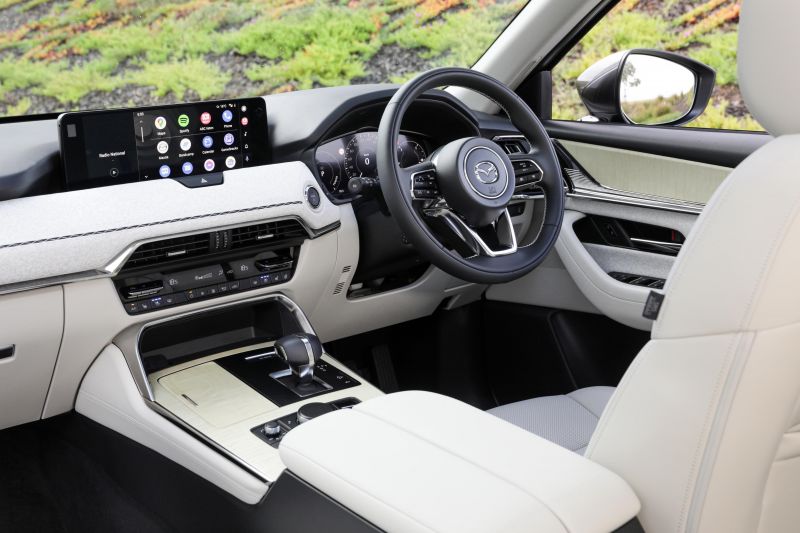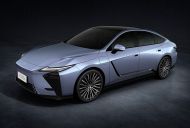The all-new Mazda CX-60 isn’t expected to be contending for sales leadership like the smaller CX-5, but the company is expecting volume in line with top sellers in the mid-sized premium SUV segment.
Speaking with CarExpert, Mazda Australia’s managing director Vinesh Bhindi said the company would be happy with around 500 units per month, which would put the CX-60 ahead of the likes of the Audi Q5, BMW X3, and Mercedes-Benz GLC.
“We see an opportunity for about 500 units a month,” Mr Bhindi said. “If we can do more, we can get more – that’s not an issue.”
Mr Bhindi confirmed the CX-60 is a brand builder rather than a volume play like products such as the CX-5, which is in the race for overall SUV sales leadership with the Toyota RAV4 as well as the all-electric Tesla Model Y.
“Our main objective to give existing Mazda owners, whether they have a CX-5 or even a three-row CX-8 or CX-9 and their circumstances have changed, an opportunity to step up into something that’s more suited to where they are in life – incomes improved, status improved,” Mr Bhindi continued.
“That’s where CX-60 sits, and we think we can get up to about 500 [per month].”
A monthly sales rate of 500 units equates to 6000 sales per year, which puts the CX-60 in second place behind the Tesla Model Y in the premium mid-size SUV class based on 2022 figures.
For calendar year 2022 Tesla registered 8717 Model Ys despite it being on sale for less than half the year (in 2023 it’s already sitting at a lofty 14,002 units as of June 30), followed by the BMW X3 (4546 units) and Mercedes-Benz GLC Wagon (4325 units) – if you combined the GLC Wagon and GLC Coupe, Benz was in second place with 5856 units.
Mazda Australia anticipates mid-spec GT versions will account for 50 per cent of sales, with the base Evolve and top-spec Azami grades accounting for 30 per cent and 20 per cent respectively.
Further, the e-Skyactiv G 3.3-litre turbocharged inline six petrol is anticipated to account for 45 per cent of overall sales, with the e-Skyactiv D 3.3-litre turbocharged inline six diesel a little lower at 35 per cent.
Finally, the e-Skyactiv PHEV 2.5-litre plug-in hybrid is forecast to count for one-in-five CX-60 sales (20 per cent), equivalent to 100 units per month, and around 1200 units per year.
While a smaller player than the six-cylinder mild-hybrids, the CX-60 Plug-in Hybrid’s forecast volume would see it become one of Australia’s favourite PHEVs – for reference, the MG HS Plus EV was the top seller in 2022 with 1554 units, followed by the Mitsubishi Eclipse Cross Plug-in Hybrid EV with 926 registrations.
Pricing for the all-new 2023 Mazda CX-60 starts at $59,800 before on-road costs for the entry-level G40e Evolve inline six petrol, and climbs to $85,500 before on-roads for the flagship Azami with the P50e PHEV drivetrain.
Diesel models command a $2000 premium over the equivalent petrol, while the plug-in hybrid is $10,500 dearer than the equivalent diesel across all trim levels.
Mazda is one of the few brands in Australia to offer multiple grades of plug-in hybrid.
MORE: Everything Mazda CX-60










